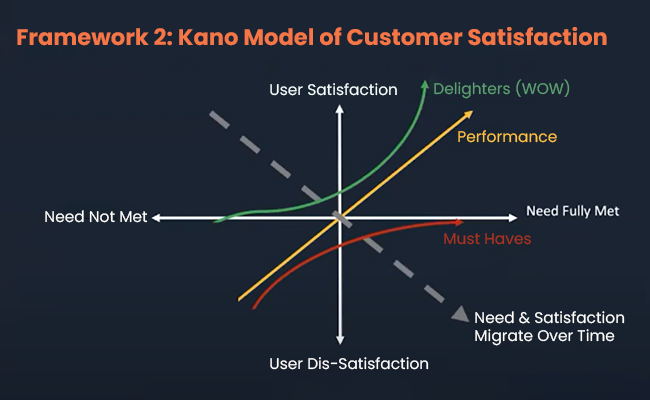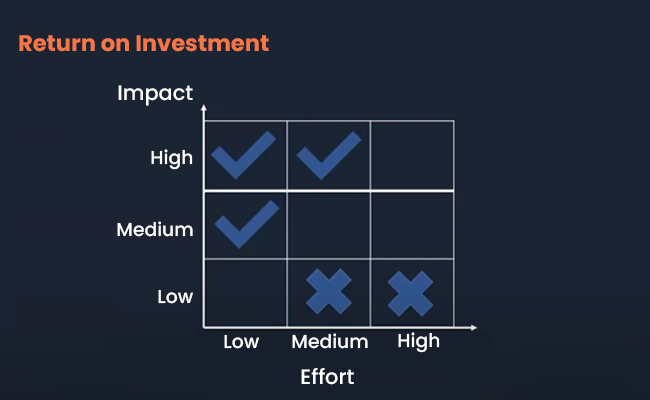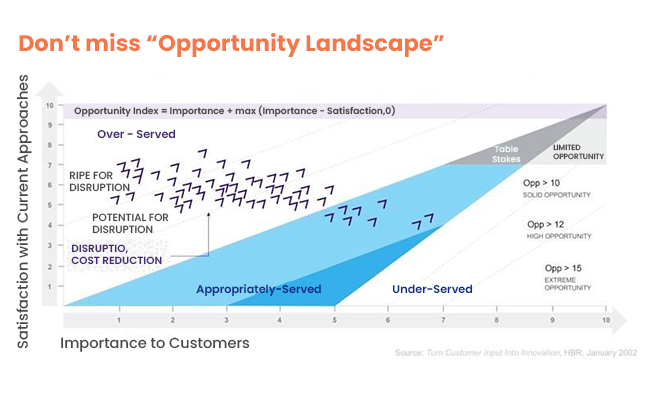1. Customer Focus
To navigate the middle path while understanding the customers, always remember that the customer does not buy the product, but rather what the product does. So the customer hires a product to do a job and can fire it anytime the job is not done. For example, many employees check out their social media handles during their lunch break hours, instead of opting for a smoke break. You can safely assume in this situation that cigarette companies are competing with social media companies. Hence, it is better to avoid both extremes, be it listening to the customers too much, or not listening to them at all.
2. Competition Tracking
Take the example of Microsoft Azure, a portable media player launched in 2006. This was Microsoft’s answer to the Apple iPod. Microsoft paid a bit too much attention to the competition and matched all the features but couldn’t succeed. Though it had feature parity, it came too late into the market. The iPod had already become the go-to source for rapid entertainment.
The other extreme is paying no attention to the competition. Amazon’s 2014 Fire phone was not successful. The reason was that it arrived late in the market and had a limited number of apps compared to the competition like Android and iOS. Hence, people decided not to adopt it.
To help in this process, product managers can take the help of the Kano model was developed in the 1980s by Professor Dr. Noriaki Kano. This is the chart between user needs and satisfaction. There are a few attributes in the product that are must-haves. Their presence might not give a competitive advantage but their absence can create a lot of customer dissatisfaction. For example, in phones, decent sound quality to make calls is a must-have. If it is present, we might not notice it. But if it is not present, we will notice it.
Some features are performance-based, the more the merrier. For example, in the case of phones, the higher the battery life, the better.
Lastly, a few features are delighters. Not having these features might not cause dissatisfaction because we are not expecting them. But their presence can take user experience up by a large degree. In the case of phones, having a waterproof body can be an example.

You also need to keep in mind that yesterday’s delighters can be today’s performance and today’s performance can be tomorrow’s must-haves. For example, dual camera, dual sim, and 5G supports are entering the must-have bracket today.
3. Engineering Collaboration
Let us first understand how obsession with engineering can be a pitfall. Take the example of Pippin, which was a multimedia console that could play games, music, videos, and even browse the web. It was more than a console. It was based on the Macintosh platform and ran a modified Mac OS with the ambition of a system close to the current Macintosh at the hardware development stage. The cost was around 600 USD and it was tough to sell. It was an engineering marvel but failed.
Now we will understand how not collaborating with engineering at all can also be a pitfall. Steven Sasson invented the digital camera in Kodak’s R&D Labs in the 1970s. It weighed around 8 pounds and had 0.01 megapixels. Kodak didn’t act upon it and the product was a failure.
To solve these problems, consider problem space vs solution space. Start from the problem space and once the team is aligned on the problem space, then move to the solution space. The articulation of the challenge would be different in both spaces.
4. Multi-Side Management
Facebook, Google, Amazon, etc. all are examples of multi-sided markets. There is one side which is the end customer, and on the other side, there are providers like merchants, advertisers, drivers, etc. The question is which side should we focus on- the end customer side or the provider side while designing the product.
Let us understand what happens when we focus too much on the end-customer side. Google is the gold standard when it comes to acing the multisided markets with a history of successful platforms used by billions. Google Health started in 2006 as an attempt to create a repository of health records, to connect customers with doctors, pharmacies, and insurance companies directly. However, it couldn’t scale as planned and was discontinued in 2012. Here, Google was not able to get provider relationships on board.
To solve this problem, consider balancing both sides with adoption and retention. Focus on optimal adoption from providers initially which can drive the critical mass of the customers. On the customer side, aim for retention. This means ensuring that those who use the product or service once come back periodically. This will give confidence in the product fit. Once there is sufficient track, we can start working on the scaling of the product.
5. Feature Prioritization
Two frameworks can help in prioritization. The first is the return on investment. Assume an X-axis where you have effort (low, medium, and high), and on the Y-axis you have impact (low, medium, and high). Once we pin the features in this three by three, we can confidently say that we should go for the high-impact and low-effort features. This is a great tool that helps us get the best ROI from development teams. You can avoid adding features that might take a lot of effort but will not create a high impact. The downside of this tool is that it makes us blindsided on the opportunity part, so it needs to be complemented by something else.








